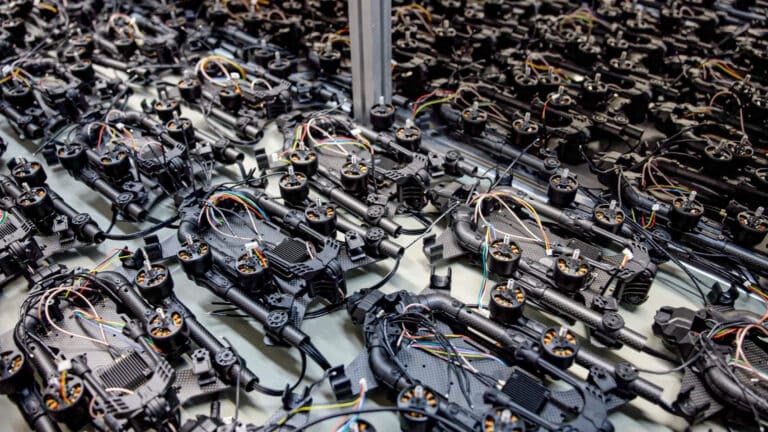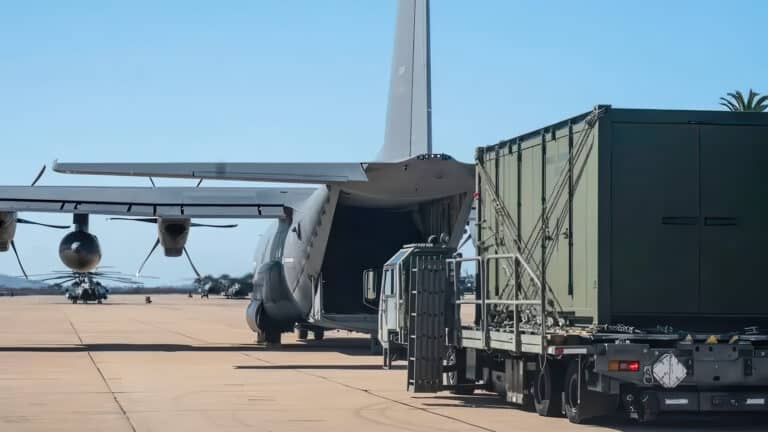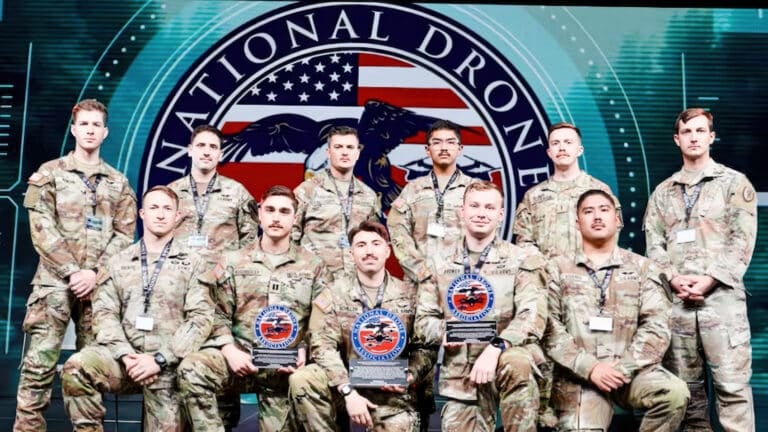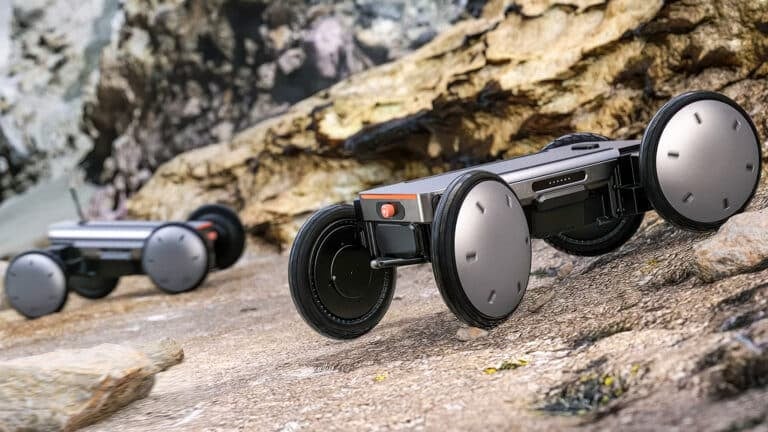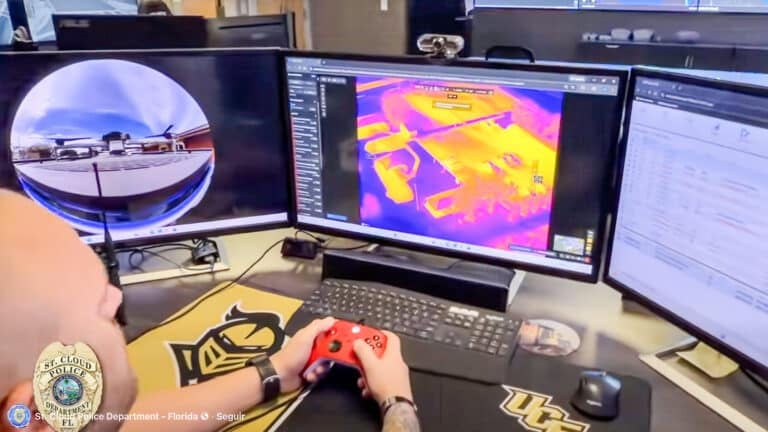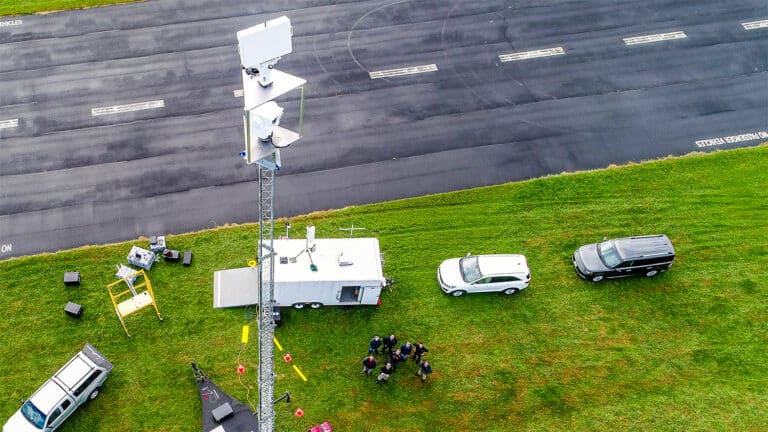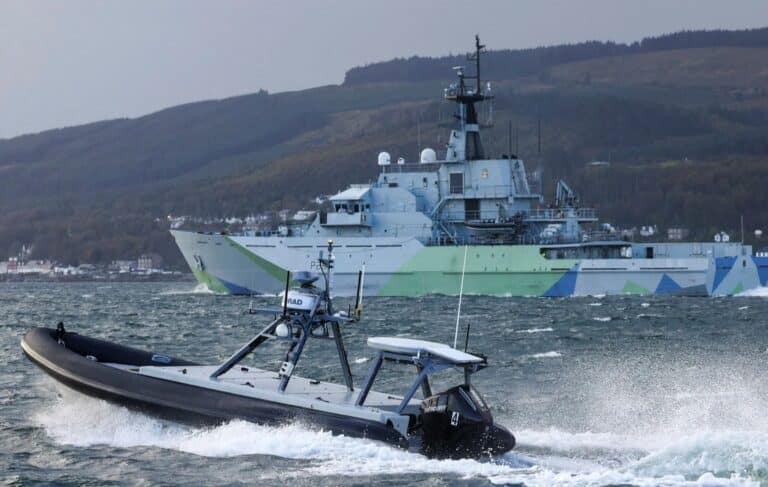Danish Researchers Prove Arctic Drones Can Transform Search and Rescue in Greenland’s Extreme Conditions
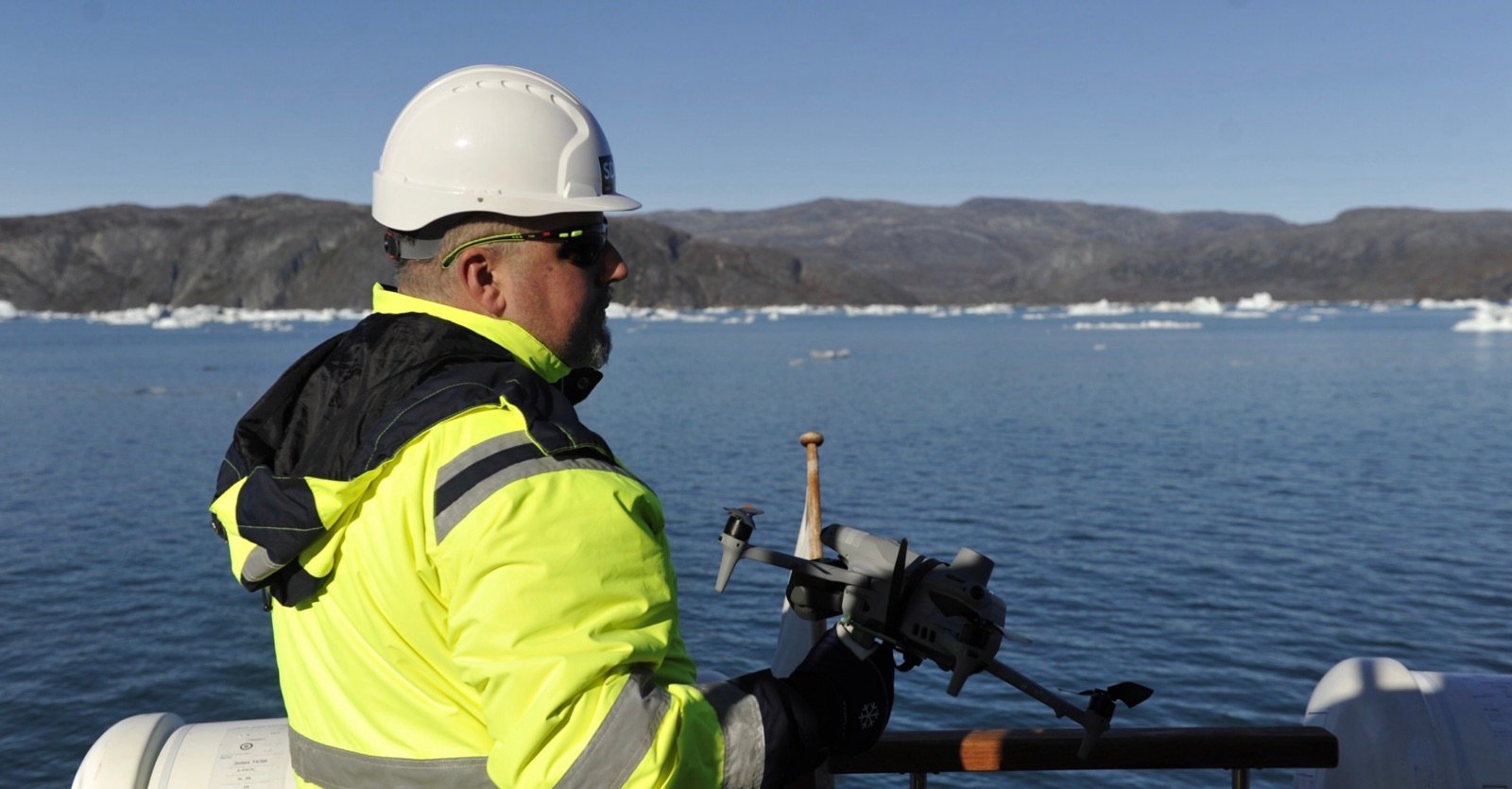
Danish and Greenlandic researchers have successfully demonstrated how off-the-shelf drones can revolutionize search and rescue operations in the Arctic’s harshest conditions, completing 32 test flights in Greenland that generated critical data for developing next-generation helicopter-integrated rescue systems.
Researchers from the University of Southern Denmark and the Alexandra Institute, working alongside Denmark’s Joint Arctic Command, conducted the pilot study in Nuuk, Greenland’s capital, this past September. The project marks the first step toward creating fully integrated drone-helicopter systems specifically engineered for Arctic search and rescue missions.
Why Arctic Drone Testing Matters Now
The timing couldn’t be more critical. Arctic maritime traffic has surged 37% over the past decade, while the distance ships sail through Arctic waters has increased 111% during the same period, according to Arctic Council data. With shipping growing approximately 7% annually and winter sailing time tripling, rescue infrastructure faces unprecedented pressure.
“We wanted to know when our sensors work best, and when they fail,” said Jussi Hermansen, Senior Specialist at the Faculty of Engineering, University of Southern Denmark. “Thermal cameras can miss someone if cliffs are warm or water reflects light. You only learn that by testing in the real environment.”
Funded by Denmark’s National Defence Technology Centre, the pilot study tested how standard, commercially available drone technologies perform in extreme cold, high winds, and limited GPS coverage. Rather than proving whether drones work in Arctic conditions—already established—the research focused on identifying exact strengths and breaking points under operational pressure.

Real-World Arctic Testing Reveals Critical Insights
The research team launched two drones from dramatically different locations: one from a coastal headland locals call “the world’s end,” the other from a small vessel navigating Nuuk’s icefjord. Researchers alternated between piloting the aircraft and serving as simulated missing persons, walking, lying down, or hiding behind cliffs to create realistic search scenarios.
While specific drone models weren’t disclosed, a photo used in the original World Economic Forum article appears to show a DJI Matrice 4. Previously the research team has used DJI M210 enterprise platforms for Arctic testing.
Across 32 flights, the team confirmed thermal imaging performs best during early morning or late evening hours when the landscape cools. Strong sunlight, however, can obscure objects entirely—a critical finding for rescue coordination. The mission generated 250 GB of data now being used to train artificial intelligence models that will automatically detect points of interest during future operations.
The flights exposed Arctic-specific challenges that plague drone operations in extreme environments. Batteries drain significantly faster below freezing. Ice forms on rotors mid-flight. Communication links frequently fail near the poles. GPS reliability becomes questionable. These aren’t theoretical problems—they’re operational realities that rescue teams must overcome.
Engineering Solutions for Extreme Environments
The Nuuk pilot represents more than data collection—it’s the foundation for engineering drones capable of mastering Arctic conditions. The broader goal involves moving from experimental flights to operational systems that actively guide helicopter missions through semi-autonomous aircraft.
These next-generation systems would scan terrain independently, mark potential targets, and stream live thermal and visual data directly to helicopter crews, enabling faster and more precise searches. The research team aims to develop a fixed-wing search and rescue drone that can be launched and recovered directly from a helicopter in mid-air, inspired by Switchblade drones used in defense operations.
Such systems could extend helicopter search ranges by 20% or more—a potentially life-saving advantage in Greenland, where the number of available rescue helicopters remains severely limited compared to the vast territory they must cover. In regions where every minute matters and weather conditions can change within moments, extending effective search range translates directly into survival rates.
Global Applications Beyond the Arctic
Technologies proven functional in Arctic conditions demonstrate immediate applicability to disaster response worldwide. Systems that fly reliably without GPS coverage and stream live data over long distances prove equally valuable in earthquake zones, mountain rescues, wildfire operations, and anywhere infrastructure has collapsed.
The European Union’s integrated Arctic policy specifically highlights unmanned aerial systems as essential for safety, climate monitoring, infrastructure inspection, wildlife conservation, and resource management. By 2035, the European Commission estimates the drone sector could represent up to 10% of the EU aviation market, creating more than 150,000 jobs.
The International Maritime Organization’s Polar Code flags the urgent need for stronger search and rescue capacity in polar waters. Meanwhile, Canada, the United States, and Russia are investing heavily in Arctic drone capabilities as the region’s strategic importance grows.
“Standing on a boat in the fog outside Nuuk, launching a drone in the morning mist, that’s when it feels real,” Hermansen said. “We’re not just testing machines. We’re testing how to save lives in the toughest environment on Earth.”
DroneXL’s Take
This Greenland pilot study arrives at a fascinating moment for Denmark and Arctic drone development. Just weeks before these successful Arctic tests, Denmark experienced a massive “drone panic” that shut down Copenhagen Airport for three hours, triggered a nationwide five-day civilian drone ban, and prompted deployment of Ukrainian drone specialists, Swedish anti-drone equipment, and NATO forces across Scandinavia. Authorities later quietly confirmed many sightings were actually conventional aircraft, though they refused to share findings publicly.
The contrast couldn’t be sharper: Denmark panicking over misidentified planes while simultaneously proving drones’ actual life-saving capabilities in Greenland. It’s a perfect illustration of the gap between drone hysteria and drone reality—a theme we’ve covered extensively as similar misidentification incidents have plagued the United States and Europe.
But this research connects to a much broader Arctic story we’ve been tracking. As NATO races to develop Arctic-capable drones, with Denmark allocating $381 million for long-range Arctic surveillance systems and Norway deploying the first operational NATO drone swarm, the strategic importance of cold-weather drone technology has never been higher. Denmark and Norway have signed joint agreements for Arctic maritime drone surveillance, while Russia maintains a significant lead in Arctic drone deployment.
The Nuuk study’s focus on search and rescue provides crucial cover for dual-use technology development. Everything learned about operating drones in extreme cold, limited GPS environments, and harsh weather conditions applies equally to military surveillance and defense operations. That’s not criticism—it’s strategic reality. As Arctic sea ice retreats and shipping lanes open, nations with effective Arctic drone capabilities gain significant advantages in both humanitarian response and territorial monitoring.
What’s particularly smart about this approach is starting with off-the-shelf technology rather than expensive custom systems. As we’ve seen in Ukraine’s battlefield innovations, sometimes the most effective solutions come from adapting existing commercial technology rather than waiting years for defense contractors to deliver overpriced alternatives. The Nuuk team’s methodology—test commercial drones, identify failure points, engineer solutions—mirrors successful rapid-iteration development patterns proven effective in actual combat conditions.
The thermal imaging insights alone justify this research. We’ve covered numerous search and rescue operations where thermal drones located missing persons that ground teams couldn’t find, but understanding exactly when thermal imaging works best (early morning/late evening in Arctic conditions) versus when it fails (strong sunlight, warm cliffs, water reflections) provides actionable intelligence for rescue coordinators worldwide.
The ambitious goal of mid-air helicopter launch and recovery deserves attention. If Danish researchers can develop reliable systems for deploying fixed-wing drones from helicopters in Arctic conditions, they’ll have created technology with immediate applications for NATO allies, commercial rescue operations, and scientific research missions. The 20% search range extension might sound modest, but in Arctic operations where helicopters are scarce and territories are vast, that extension could mean the difference between finding someone alive versus recovering a body weeks later.
As climate change continues warming the Arctic nearly four times faster than the global average, the region’s transformation from frozen barrier to accessible frontier accelerates. More ships, more tourists, more resource extraction, more accidents, more rescues needed. Denmark’s investment in Arctic drone search and rescue technology positions the country—and by extension, NATO—to lead in providing humanitarian response capabilities that double as strategic surveillance assets.
What do you think about Denmark’s dual approach of developing beneficial SAR technology while simultaneously building Arctic surveillance capabilities? Share your thoughts in the comments below.
Discover more from DroneXL.co
Subscribe to get the latest posts sent to your email.
Check out our Classic Line of T-Shirts, Polos, Hoodies and more in our new store today!

MAKE YOUR VOICE HEARD
Proposed legislation threatens your ability to use drones for fun, work, and safety. The Drone Advocacy Alliance is fighting to ensure your voice is heard in these critical policy discussions.Join us and tell your elected officials to protect your right to fly.
Get your Part 107 Certificate
Pass the Part 107 test and take to the skies with the Pilot Institute. We have helped thousands of people become airplane and commercial drone pilots. Our courses are designed by industry experts to help you pass FAA tests and achieve your dreams.

Copyright © DroneXL.co 2025. All rights reserved. The content, images, and intellectual property on this website are protected by copyright law. Reproduction or distribution of any material without prior written permission from DroneXL.co is strictly prohibited. For permissions and inquiries, please contact us first. DroneXL.co is a proud partner of the Drone Advocacy Alliance. Be sure to check out DroneXL's sister site, EVXL.co, for all the latest news on electric vehicles.
FTC: DroneXL.co is an Amazon Associate and uses affiliate links that can generate income from qualifying purchases. We do not sell, share, rent out, or spam your email.





